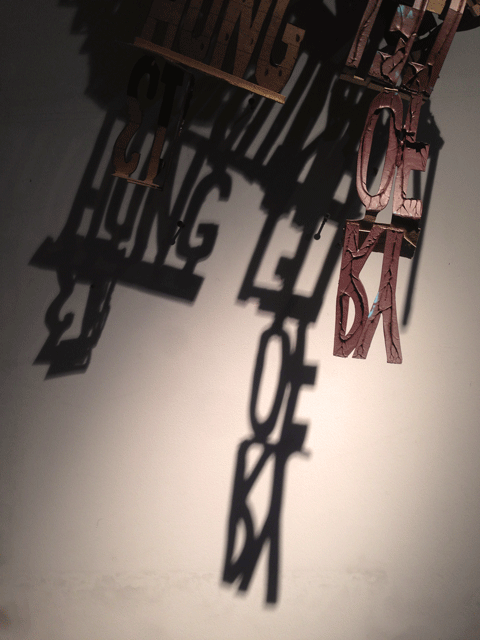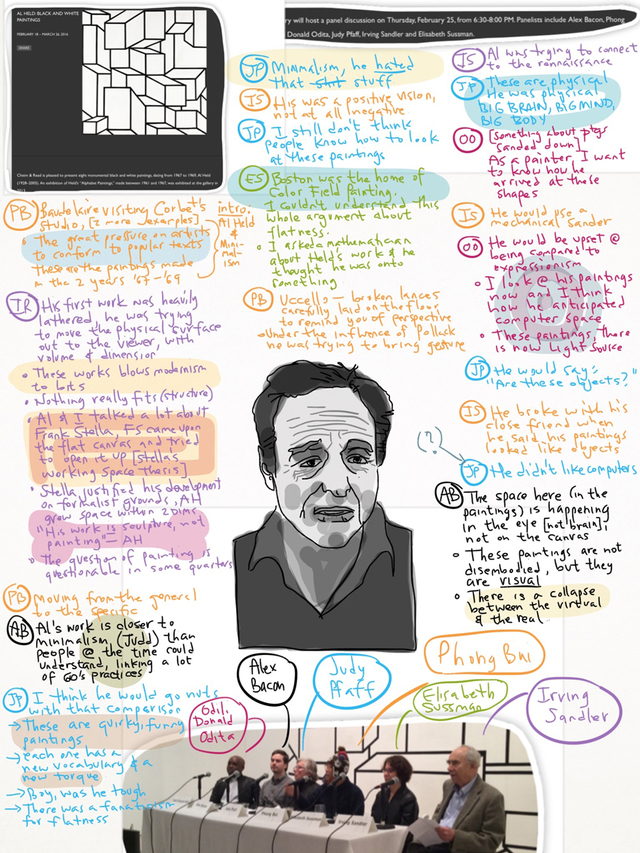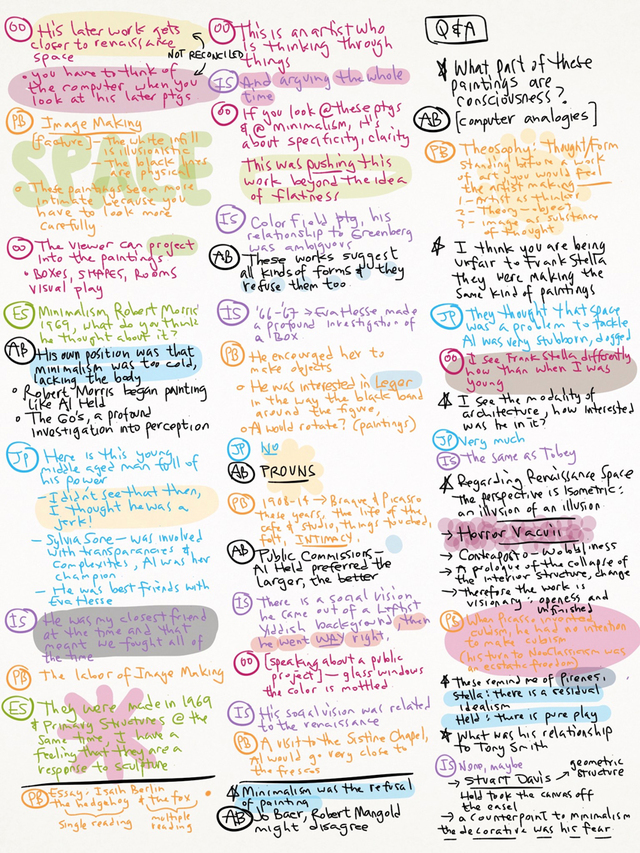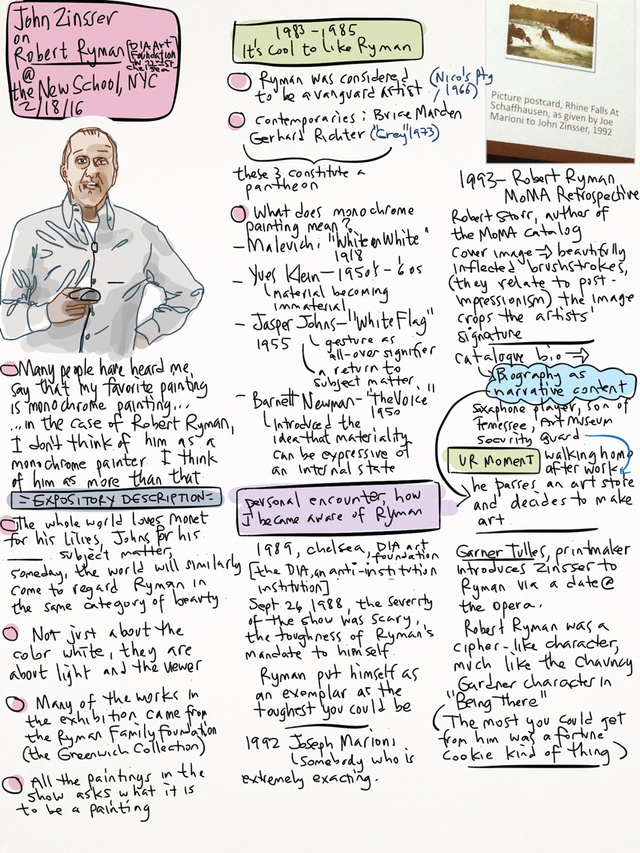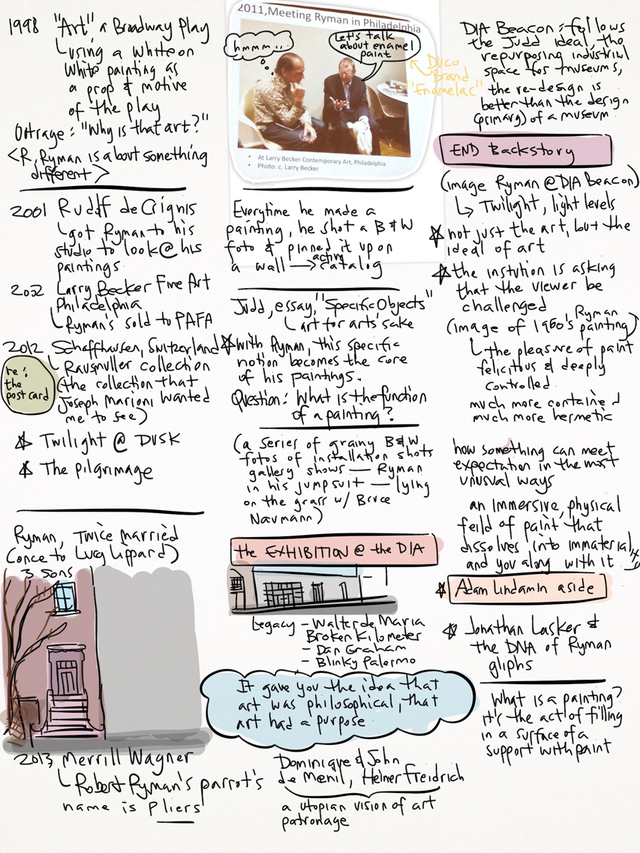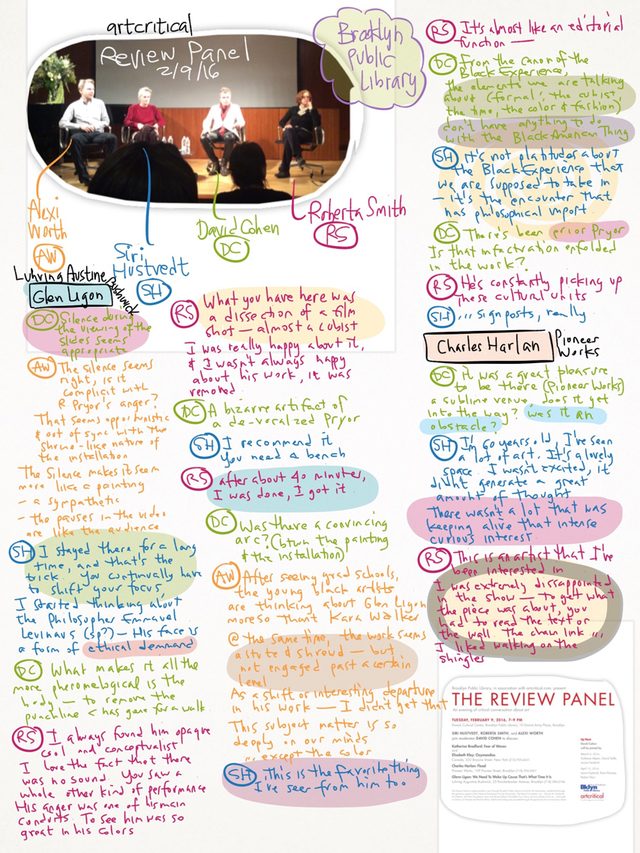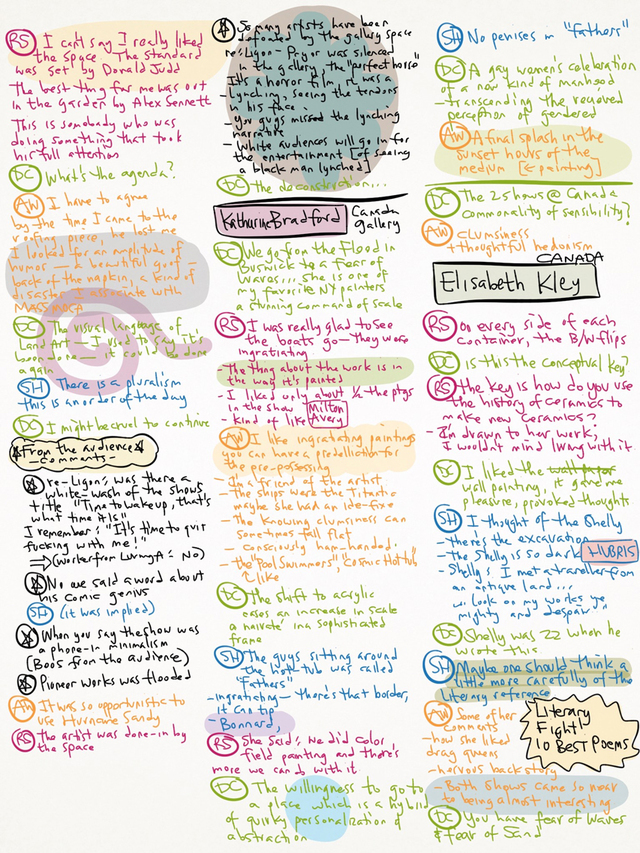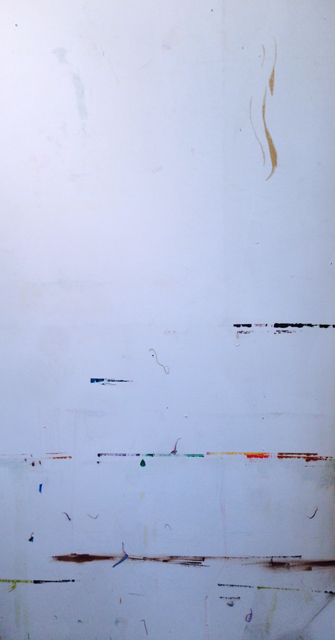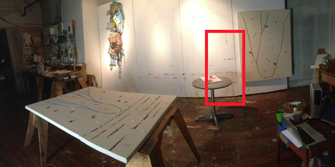February 28, 2016
Peter Fischli David Weiss at the Guggenheim
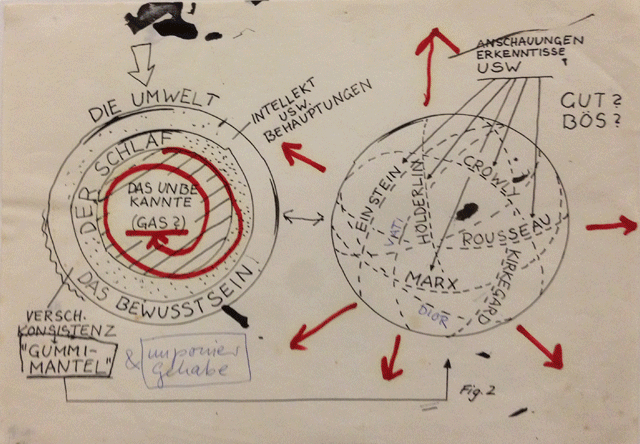
(Selections from "Order and Cleanliness", 1981)
Peter Fischli David Weiss: How to Work Better
Walking down the spiral ramp of the Guggenheim, much time was spent marveling at the simulacra fabrication of quotidian studio debris, all made from hand carved foam. Tools, buckets, hardware store products, cabinetry. After a few exhibition bays, I wondered about the focus required to keep on conceptual point, to resist in-jokes, poetry, tangents and flights of fancy (the one and only exception was "The Raft" - I thought of Géricault - installed in the final gallery at the top of the ramp, and curiously lit in an archly theatrical manner, perhaps unique to this installation)... was it philosophical rigor or a rigor-mortis of routine and technique?
My definition of postmodernism fits this work perfectly. To quote myself [ahem]: "pointing at everyday life via conceptual means", and Fischli & Weiss did an awful lot of pointing. I thought of how different and how similar this work is in compared to Claes Oldenberg's plaster and sculpture of everyday objects. Gone are the overtones of Ab-Ex slap happy paint handling, the cartoonish exaggeration and perhaps more importantly, whimsy itself. Gone too is an eye for the wider and even popular world and in its place, the gaze is kept rigidly to the inner world of their studio. Severe self reflection seems to be the sole conceptual means. There is nothing to transcend.
Further down the ramp came the Rube-Goldberg photographs balancing things (anything literally within reach) together much like a hiker or beach goer would balance a tower of rocks... and a film of such a contraption in action, always a crowd magnet.
Further still was planted a forest of plinths topped with hand sized unfired clay purported to be a loose encyclopedic history of the world, each amusing and touching in the way direct work with the hand can do (I thought of Tom Otterness) to an audience but collectively I concluded that a loose encyclopedia is oxymoronic.
The final turn of the spiral walk was populated with early drawings, a majority of them diagrammatic. Diagrams of what? As yet I don't know, but I suspect that they might be like Wittgenstein's ladder, meant to be discarded once you ascend it.
February 26, 2016
Al Held panel discussion at Cheim & Read
Cheim & Read hosted a panel discussion last night focusing on the life and work of Al Held, moderated by Brooklyn Rail's Phong Bui and panelists include Alex Bacon, Odili Donald Odita, Judy Pfaff, Irving Sandler and Elisabeth Sussman. It was great to hear stories about Held's life from people who know him academically or first hand. As you will read below, Bui centered the discussion on Held's relationship to the art dialog and canon both at the time and today.
During the talk, I thought about artist's foundations. Evidently, it is the artist's largess that fuels the creation of such a legacy preserving instrument. Artist foundations are a simulacrum of what happens spontaneously (in institutional and market terms) to legacy artists (da Vinci, Van Gogh, Picasso, Duchamp...) in terms of scholarship (preservation of historical memory, oeuvre cataloguing, mastication of significance) and market value. If you think of artistic significance as if it has three tiers: gods, demigods and mere mortals (to explain: the inarguably famous, the arguably famous and the soon-to-be-forgotten), then artist foundations like Held's or Frankenthaler's or Ossorio's (I wonder just how many others are there?) are active efforts to realize a promise of significance. Talking to friends afterwards, there was an awareness of how the estimation of an artists' significance changes between generations. What was left unsaid was a shared anticipation of future change, of whether or not its character is mere caprice. BEHOLD! Our trembling mortality in the temple of the gods!
February 24, 2016
ARCO Stand 7F04
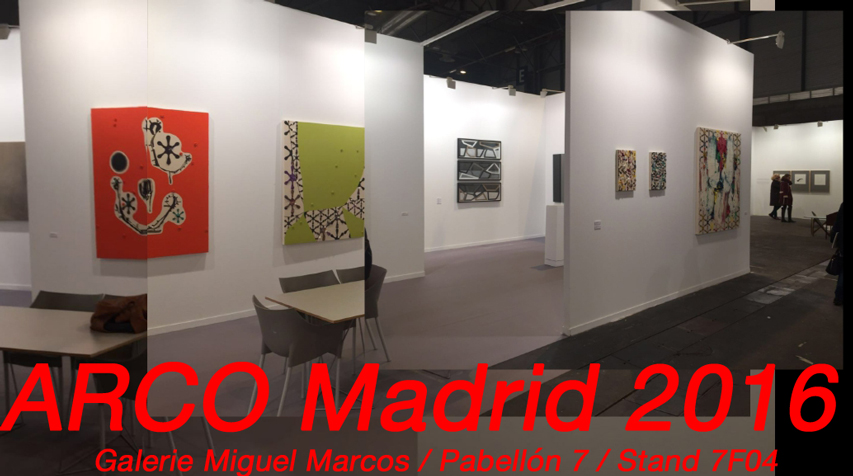
My gallery in Spain, Miguel Marcos, is showing the paintings I created last summer at ARCO Madrid this week.
You can read more about the summer paintings here in a short summary, or you can peruse my archives for June, July, and August instead.
February 22, 2016
lines between pools
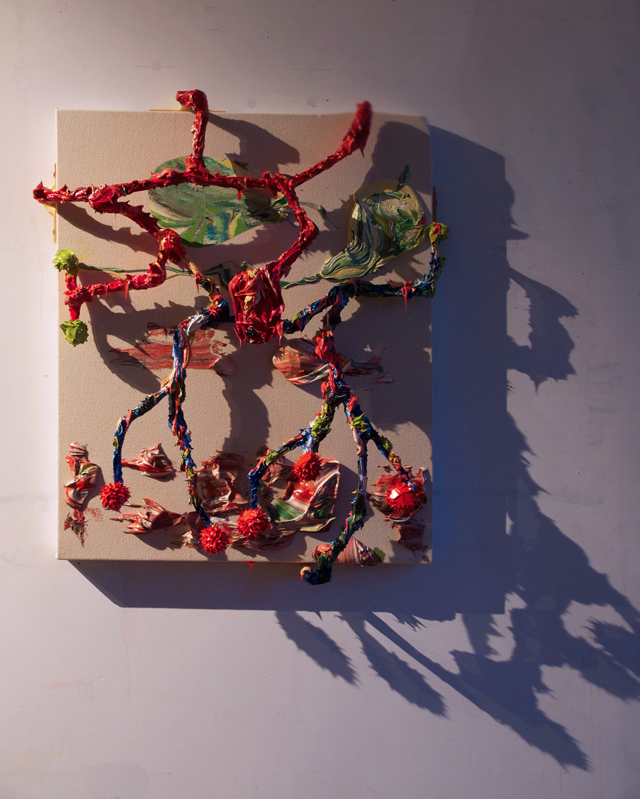

lines between pools
2016
#515
28"x22"
oil on wood armature and canvas
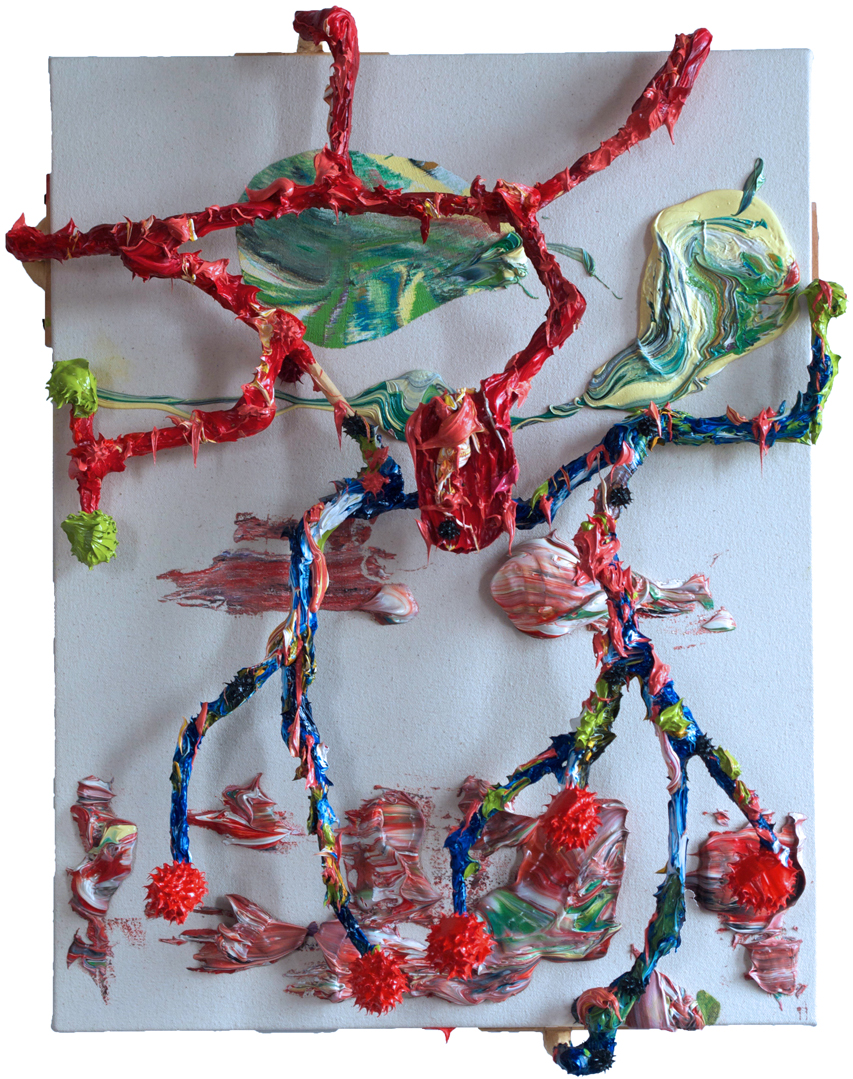
February 18, 2016
John Zinsser on Robert Ryman at the New School
Today, John Zinsser gave a talk to his class at the New School, about the paintings of Robert Ryman and his exhibition at the DIA Art Foundation in Chelsea NYC.
I took notes:
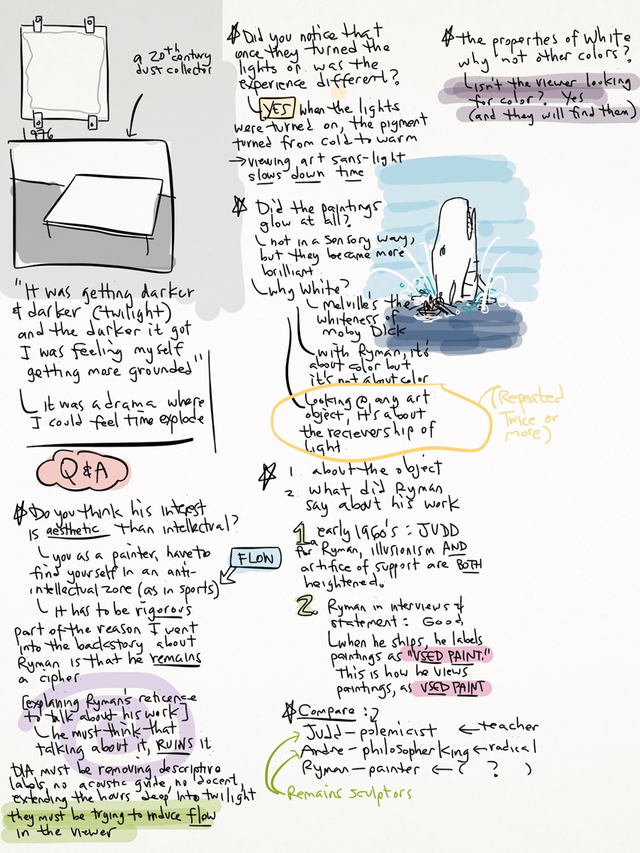
This is what I wrote about Ryman a month ago:
When I think of Robert Ryman's work, I think of exploded axonometrics. A term common in architectural contexts, the exploded axon is a method of making clear the component parts of a complicated object. Ryman famously made all of the component parts of a painting eligible for aesthetic disposition, from paint-qua-paint on the surface to all of the elements of the support behind, and even to the method of mounting all of this to a wall. Like Stella, Ryman has a survey exhibition up currently in NYC this season, at the DIA Art Foundation, Chelsea. What I see in this show is how Ryman has settled over the years more on paint-qua-paint and less on painting as an exploded axonometric. I am compelled to note parenthetically that for me his axon paintings tend to recall Donald Judd's work and so I wonder about the nature of any cross influences. For the segment of his oeuvre that treats all components of a painting, through the parts of the support, down to the brackets on the wall... there is little of the ooze and flow to these elements that are natural to paint that he has taken the liberty to exploit. All components keep their place in all arrangements: brackets stay on the wall and don't appear to rival or displace the daubs of paint on the surface of his constructions. Supports still support but only support. Every component serves paint-qua-paint and there are no trading places. So it was no surprise to see that he had arrived at what is obviously an overriding concern. The accompanying catalog notes that he considered that the color white encompassed all color, and so his facture stays focused on the one color which for him was all color.In other (and perhaps merely only more) words, I saw a painter preoccupied with the facture (handling) of paint. In order to do this, Ryman initially made clear the constituent parts of a painting from paint to the cloth surface to the wood or metal frame that suspends it to the method of attachment to the wall. He did nothing with these explicated elements, he did not treat or exploit them in a painterly manner, in a plastic manner. He did not do what Beethoven did in his later symphonies, for example, in the liberties he took with the sonata form: stretching, inverting, juggling the elements at will. Curiously, Ryman's practice in later years relaxed to what is his ultimate concern: a loaded brush expending itself on a surface and reloading again.
John anchored Ryman on Donald Judd, but what I got from Zinsser's lecture was a sense of the light and space artists. With Zinsser's emphasis on the dissipating twilight at dusk, images of Turrell replayed in my head. Zinsser: "It was getting darker and darker [twilight] and the darker it got, I was feeling myself getting more grounded".
This dissipation extended to the persona of Ryman as an enigmatic figure in art history "...he was a cipher... a cipher character, much like the Chauncey Gardner character in 'Being There' ", [explaining Ryman's reticence to talk about his work] "...he must think that talking about it, ruins it..." And as such, he emptied his persona up so that it's easy for the public to fill it -him, Ryman- up with their projections. Now I'm sure Zinsser was merely joking when he referred to the DIA Foundation as a cult...
[At this point, only an ellipsis can end this train of thought]
February 16, 2016
ARCO 2016
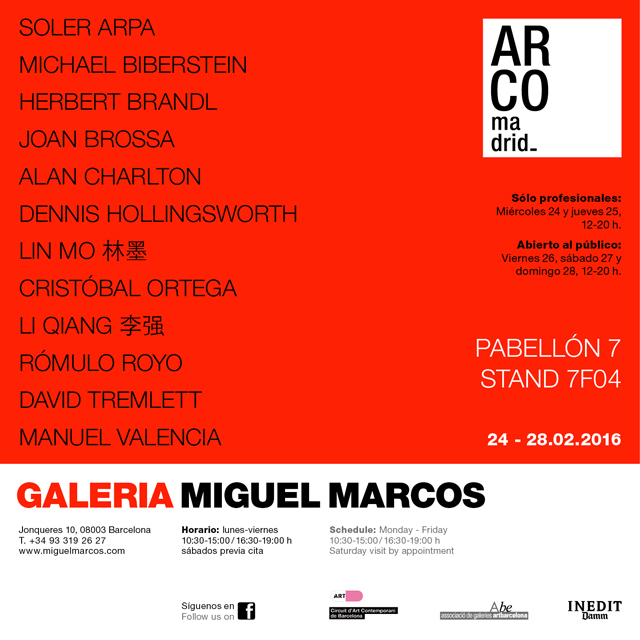
My gallery in Spain, Miguel Marcos, will be showing my paintings at ARCO 2016 Madrid.
The magazine Bonart has a short article about the fair and the participation of Miguel Marcos there. Nice, that they used an image of a painting of mine from last summer to grace the page.
You can read more about the summer paintings here in a short summary, or you can peruse my archives for June, July, and August instead.
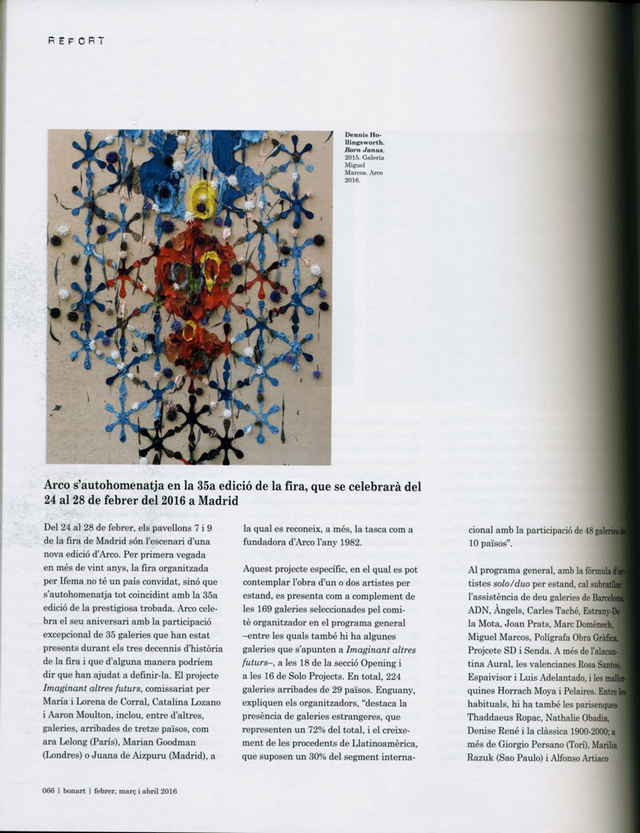
February 10, 2016
Review Panel 2/9/16
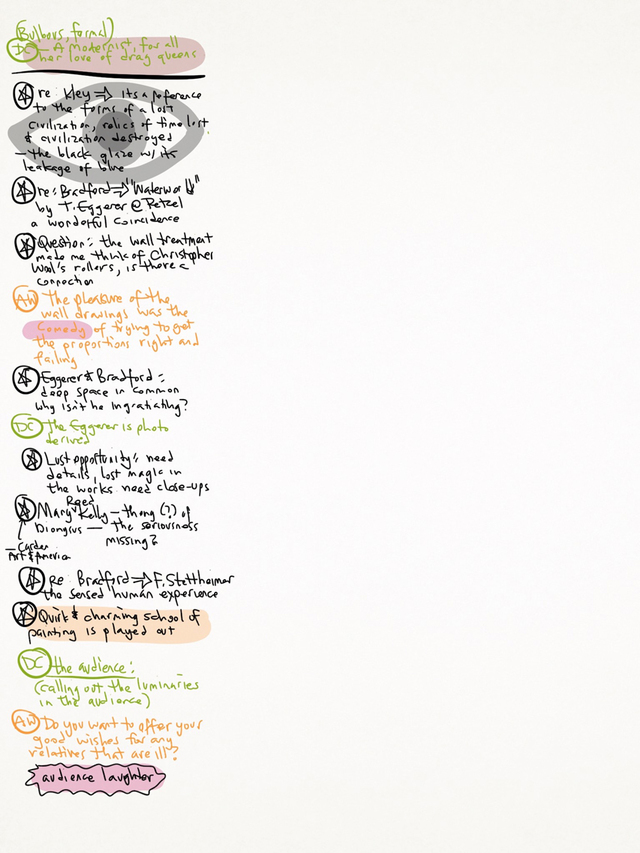
It was great to see the resumption of David Cohen / ArtCritical's Review Panel at the Brooklyn Library last night. It was a packed house, probably double the audience that they had at the National Academy. As always, it was an interesting evening, witnessing people think on their feet, folks I usually only read. It's nice to hear the difference in voice between the writing and in person.
February 5, 2016
February 4, 2016
pluck the fruit
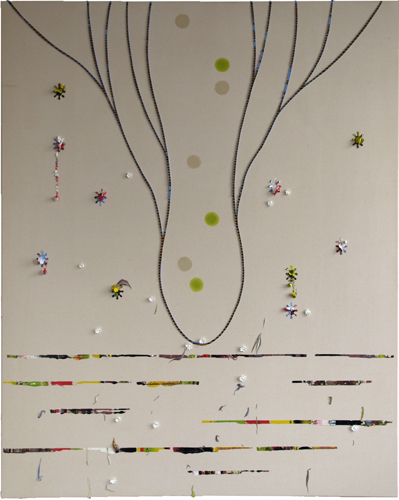
pluck the fruit
2016
#514
60"x48"
Oil on Canvas
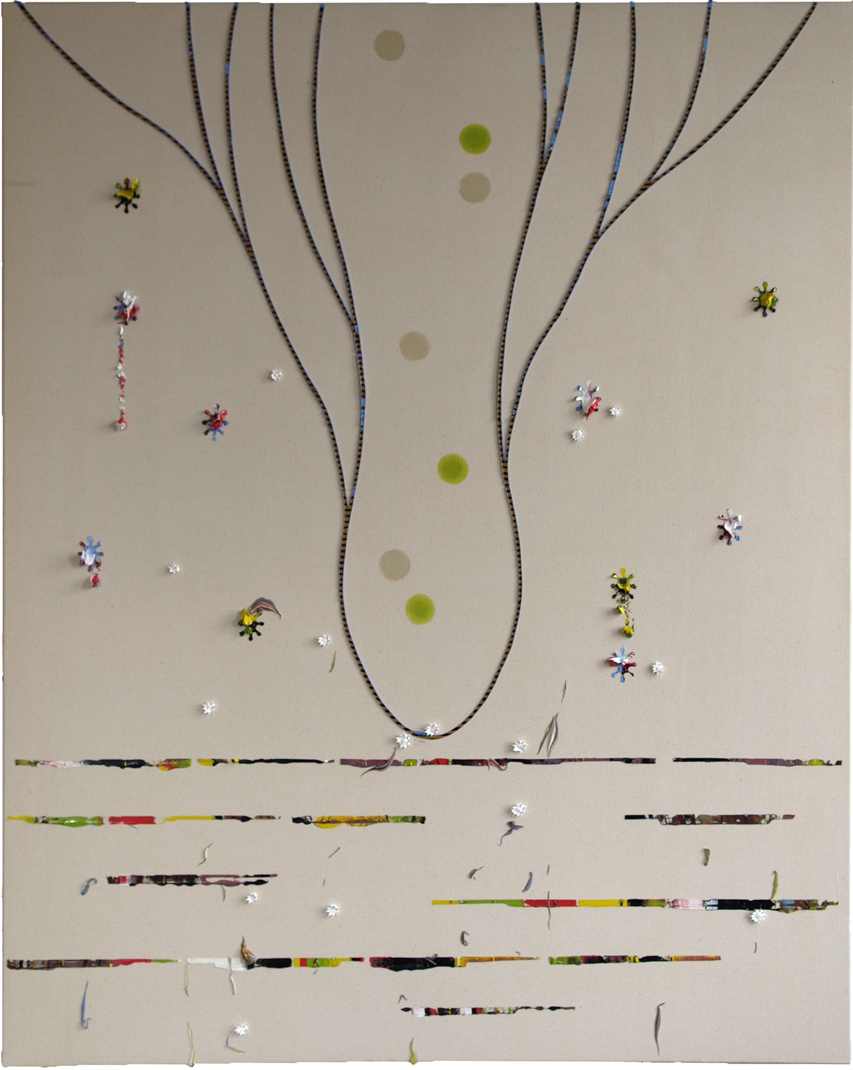
February 2, 2016
Striving, Yearning, Struggling
The audio is taken from NASA's Huygen probe landing on Titan in January 14th, 2005. (NASA has recently opened their audio library up to the public domain. The archive is a hoot.) I like the descent scenario.
The compulsion of gravity.
Kin to magnetism.
An attraction by another name.
Attraction to planetary bodies.
Falling.
Falling.
Falling.
Tierra firma.
The ultimate repository of pigment.
The soul of paint.
Mankind to untouched nature.
Technology mediating the whole experience.
Spacecraft.
Spacesuits.
Divers underwater.
Bubbles and tools between us and creation.
This mirrors my feeling for the experience of painting.
My exhibition at Hionas Gallery, NYC ends this week, Saturday February 6th.
